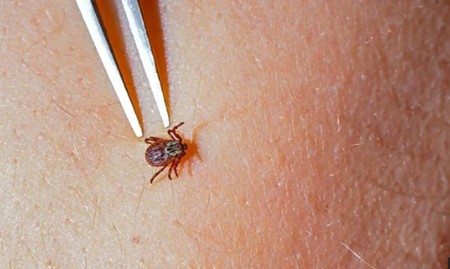
Lyme Disease on the Rise: Symptoms Often Elusive
Climate change is driving a global increase in Lyme disease, but many doctors struggle to identify its symptoms.
Ticks, which are blood-feeding parasites second only to mosquitoes in disease transmission, can bite without being felt, posing a risk of serious infection. These arachnids, resembling tiny spiders, secrete anti-inflammatory substances to mask their feeding, allowing disease-causing pathogens to enter the bloodstream.
The most infamous of these pathogens is Borrelia burgdorferi, the spiral-shaped bacteria causing Lyme disease. Named after Lyme, Connecticut, where it was first identified in 1975, Lyme disease mimics arthritis among other symptoms. Without prompt treatment, its symptoms can vary widely. Jack Lambert, an infectious diseases consultant and professor of medicine at University College Dublin, explains, "It's a bacterium that invades every tissue in the body."
Lyme disease can affect the brain, joints, muscles, nervous system, bladder, and gut, and can cause facial paralysis, heart problems, severe fatigue, and painful sensations in the extremities. Due to this wide range of symptoms, some patients are not taken seriously. Brian Fallon, director of the Lyme and Tick-Borne Diseases Research Center at Columbia University, notes the early skepticism surrounding Lyme patients in the 1990s.
This skepticism persists. Welsh rapper Ren, for instance, was misdiagnosed with bipolar disorder and chronic fatigue syndrome before receiving a correct Lyme diagnosis in 2015. Despite the challenges, most people recover with prompt antibiotic treatment. However, diagnosis remains difficult, as many practitioners overemphasize the presence of a bullseye-shaped rash, which is not always present or easy to recognize, especially on darker skin.
In my case, after being bitten by a tick in June 2023, three medical professionals misdiagnosed my expanding rash. It wasn't until I visited the U.S. in September 2023 that I received a correct Lyme diagnosis. In Pennsylvania, a hotspot for Lyme disease, I was prescribed a month-long course of doxycycline, which alleviated my symptoms.
Celebrities such as Justin Bieber, Shania Twain, and Avril Lavigne have publicly shared their Lyme diagnoses, highlighting the disease's prevalence. According to a 2022 British Medical Journal Global Health review, over one in ten people worldwide may be infected with Lyme, with East Asia and Central and Western Europe being the most affected regions.
Despite climate change warnings about increasing parasitic insects, diagnosing and treating Lyme remains challenging, particularly for those with persistent symptoms post-treatment. Fallon emphasizes the complexity of Lyme disease, with some patients developing long-term impairing symptoms.
Unfortunately, my symptoms returned shortly after ending treatment. By January 2024, I experienced memory loss, fatigue, and neuropathy. Standard Lyme tests, which detect antibodies but not live infections, revealed co-infections with other tick-borne diseases.
After three courses of antibiotics, I now have post-treatment Lyme disease syndrome, dealing with persistent tingling and joint concerns. Documentary filmmaker Richard Wilson experienced similar challenges, being misdiagnosed for years despite early signs of Lyme.
Alternative treatments, including herbal remedies, have gained interest but lack extensive scientific validation. Lambert advocates for antibiotics as the primary treatment, expressing frustration over the lack of a Lyme vaccine since LYMERix was discontinued in 2002. However, a new vaccine by Pfizer is currently in phase three trials.
Fallon remains optimistic about medical advancements, noting, "Most people can get better over time. Tremendous advances in Lyme disease treatment are expected in the next five to ten years."
I share this hope, along with many others.